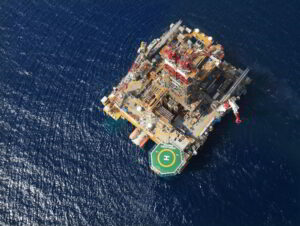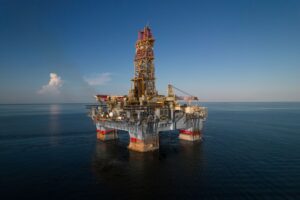Second oil discovery in block off Guyana brought to light
Two oil and gas players – Canada’s CGX Energy and Frontera Energy – have made a second discovery in the Corentyne block offshore Guyana, by encountering 210 feet of hydrocarbon-bearing sands in the Santonian.

Back in February 2022, the Guyana partners disclosed a plan to spend up to $130 million on their second exploration well on the Corentyne block, called Wei-1 with the spudding of the well slated for October 2022, using the Maersk Discoverer (now called Noble Discoverer) semi-submersible rig.
Once November 2022 rolled in, the duo revised the spud window for the Wei-1 well after the Noble Discoverer rig run into delays on its assignment with Shell in Trinidad and Tobago. As a result, the start of drilling operations in Guyana was anticipated between December 2022 and late January 2023. In line with this, the Wei-1 well was spudded in January 2023.
Earlier this month, the companies revised their total Wei-1 cost estimates to approximately $190-$195 million from the previous increase to $175-$190 million to complete the logging runs, finish well operations, and release the rig.
Related Article
-
Well results off Guyana ‘encouraging’ but total cost estimates rise again
Exploration & Production
In an update on Wednesday, 28 June 2023, CGX and Frontera confirmed the discovery of oil at the Wei-1 well on the Corentyne block and explained that drilling operations were completed without any safety incidents. The duo expects to release the drilling rig in early July 2023.
This well is located on the Corentyne block, approximately 200 kilometres offshore from Georgetown, Guyana. It is situated approximately 14 kilometres northwest of the Joint Venture’s previous Kawa-1 light oil and condensate discovery, which was the companies’ first discovery in this block.
The Wei-1 well encountered 210 feet of hydrocarbon-bearing sands in the Santonian horizon and the JV acquired wireline logs and extensive core samples from the Santonian. However, due to a tool failure downhole and a new tool not being available, the firms underline that oil samples were not obtained. The rock and fluid properties of the Santonian will now be analysed by an independent third-party laboratory over the next two to three months to define net pay and a basis for the evaluation of this interval, according to Frontera.
Furthermore, the previously announced discovery in the Maastrichtian and the Campanian intervals has been updated to 77 feet of net pay. Once fluid samples were retrieved from the Campanian and Maastrichtian, this indicated the presence of light crude in the Campanian and sweet medium crude oil in the Maastrichtian. The two players’ data acquisition programme included wireline logging, MDT fluid samples and sidewall cores throughout the various intervals.
Over the next few months, the companies plan to integrate the results into the geologic and geophysical models to form an updated view of the entire northern portion of the Corentyne block, which entails the channel complexes discovered by the Kawa-1 and Wei-1 wells, and a prospective central channel complex, which is yet to be evaluated.
“The joint venture is excited by the definitive presence of oil in the Maastrichtian and Campanian and the presence of hydrocarbons in the Santonian and believes there is significant potential in the block,” underscored Frontera.









